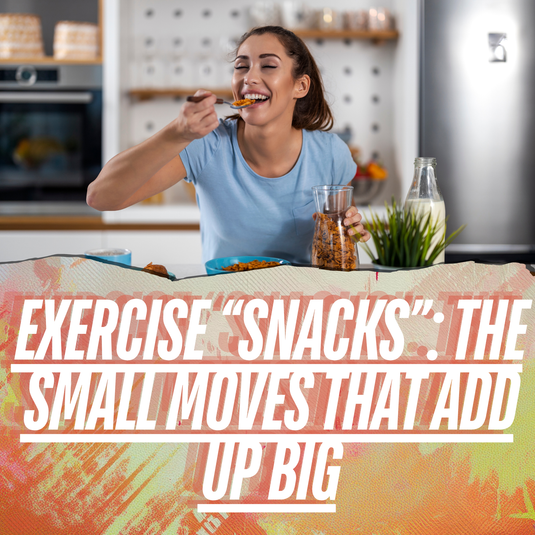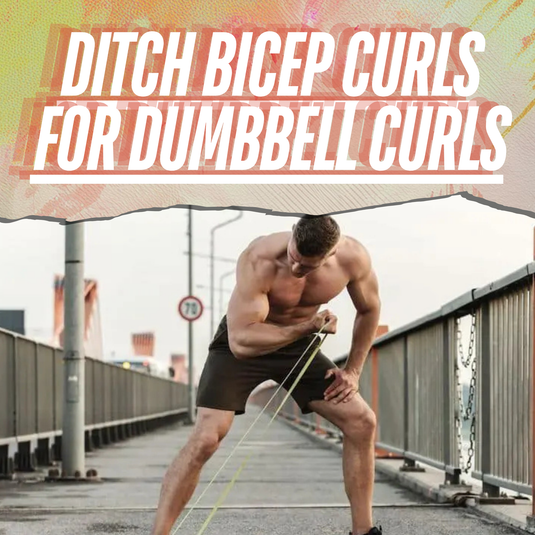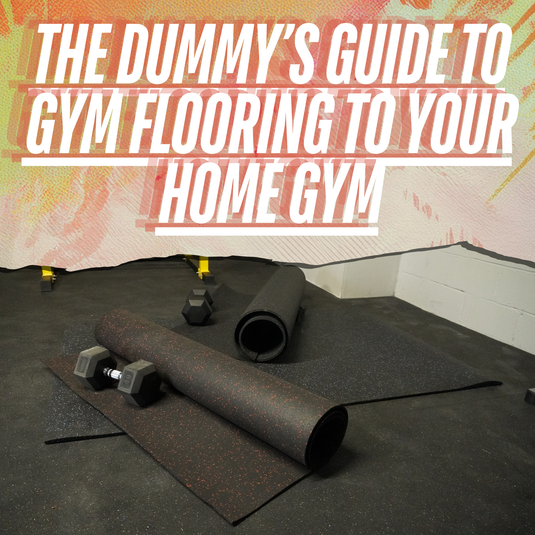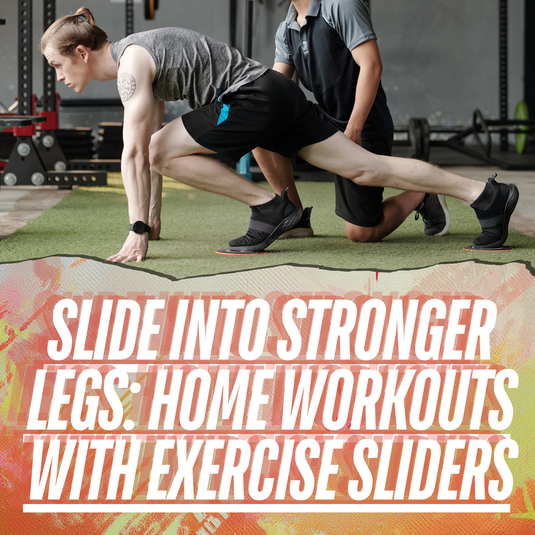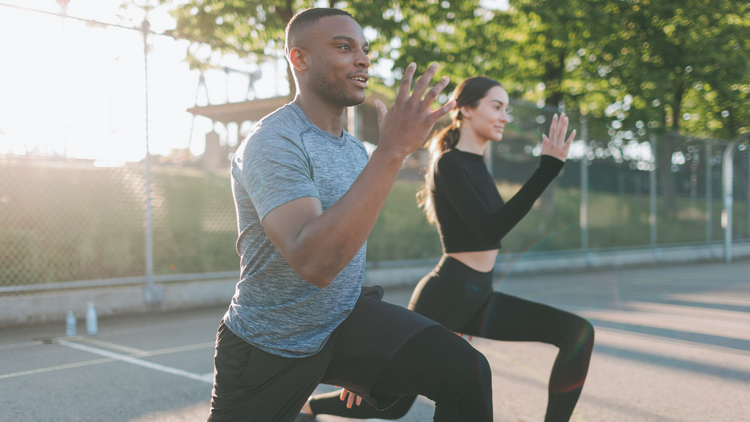Top 20 Resistance Band Exercises for Full Body
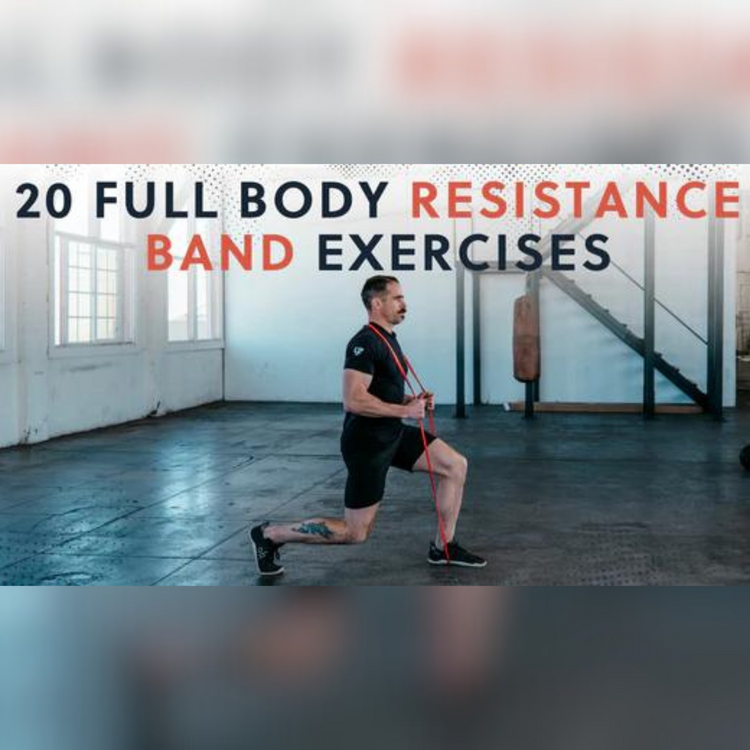
⏱️ Estimated Read Time: 6 minutes
🧠 TL;DR
- Top 20 Resistance Band Exercises for Full Body offers effective, accessible movements for targeted results.
- This guide is designed to help you move smarter, build strength, and stay consistent.
✍️ Summary
This post explores top 20 resistance band exercises for full body in a way that’s actionable and easy to follow. Whether you're new to this style of training or leveling up, it includes practical takeaways for your routine.
📚 Table of Contents
Armed with a couple of resistance bands and knowledge of movement, you can accomplish a great workout anytime, anywhere. Resistance bands are awesome because you can make them the focus of your training on a daily basis for any goal like building muscle or burning fat as well as use them as you need for a finisher or workout when you travel. Resistance Bands are so lightweight and easy to transport, a great strength building or fat burning workout is never out of reach.
Do resistance band workouts really work?
Ummmm, Yes! Resistance bands are a must add to any muscle building or fat burning plan. Additionally, resistance bands can be used in conjunction with equipment and workout plans with dumbbells, barbells, kettlebells and more. They are truly versatile. Resistance bands have a variety of types like pull up assistance bands, resistance bands with handles, mini bands and loop bands. All of these are bands which provide some type of resistance and can be used for different movements. For purposes of this article we will be covering what some refer to as pull up assistance bands because they are the most versatile combined with ease of transport.
Similar to how dumbbells and kettlebells come in different weights, resistance bands can have different levels to make a movement hard or easier. Just like you would do more reps or less reps depending on your goal, the resistance level helps determine this for you. The best way to reach any fitness goal whether that is building muscle or burning fat is following a plan constructed by a professional. The amount of reps you can do, the rest times you follow all contribute to reaching specific goals. If you blindly start using a resistance band you run the risk of overtraining, undertraining, injury and not making any progress. We also recommend following expertly created workout plans designed for specific goals.
Before we dive into the nitty-gritty of resistance band exercises, let's take a moment to understand why they're worth incorporating into your fitness routine:
-
Portability and Accessibility: Unlike bulky gym equipment, resistance bands are lightweight, portable, and affordable, making them accessible to virtually anyone, anywhere. Whether you're at home, in a hotel room, or outdoors, resistance bands allow you to enjoy a full-body workout with minimal space and equipment requirements.
-
Versatility and Adaptability: Resistance bands come in various resistance levels, from light to heavy, allowing you to tailor your workouts to your individual fitness level and goals. Additionally, resistance bands can be easily modified to increase or decrease the intensity of exercises, making them suitable for individuals of all fitness levels.
-
Muscle Engagement and Activation: Resistance bands provide constant tension throughout the entire range of motion, leading to greater muscle engagement and activation compared to traditional free weights. By challenging your muscles in multiple planes of motion, resistance band exercises can effectively target specific muscle groups while improving overall strength and stability.
-
Injury Prevention and Rehabilitation: Resistance bands offer a low-impact alternative to heavy weights, reducing the risk of joint strain and injury commonly associated with traditional strength training. Additionally, resistance band exercises can be beneficial for rehabilitation purposes, helping to strengthen muscles, improve mobility, and prevent future injuries.
Now that we've highlighted the many advantages of resistance band workouts, let's explore a variety of exercises targeting different muscle groups to help you achieve a full-body workout.
How long should you do resistance band training?
The answer to this really depends on your goals and the meaning of your question. If you mean how long over an extended period of time, you can theoretically do resistance band training indefinitely. Armed with the right knowledge of movement and goal specific plan, you could solely use resistance bands for any length of time and reach your goals. For this purpose, it would be best to have multiple resistance levels so that you can progress according to your goal.
If your question is based around the amount of time in one session. This again will depend on your goal. Typically, for building strength you will be performing lower reps, therefore most likely using a higher resistance level while for building muscle you will most use a lighter resistance which you can perform more repetitions of. You can get a more than adequate workout for either goal in 25-45 minutes of expertly created workout plans.
Kneeling Tricep Extension with Resistance Bands
Targets: Triceps, Core
How To:
- You will need to secure the resistance band either under your body or tied off behind you
- Start in the kneeling position, your glutes can rest on the back of your legs, holding the resistance band behind your head
- Perform an overhead tricep extension by pressing up using your tricep as the driver
- Keep your core tight. Your elbows can be in front of you or farther forward
Deadlift to Bent Over Row
Targets: Hips, Core, Lats, Back
- Start with the resistance band on the floor and place it under your feet. Hold one end of the resistance band each hand
- Hinge your hips and push your glutes back lower yourself at the hips
- At the bottom part of the deadlift while your hips are in the hinge position, pull or row with your back muscles.
- When your hand are at the bottom of the row, hinge your hips to bring yourself back to the standing position while keeping tension on the resistance band
Overhead Pull with Resistance Bands
Targets: Shoulders, Back, Core
How To:
- Tie the resistance band off to something like a door or a weight
- Get into a kneeling position with the anchor in front of you at a distance that keeps tension in the resistance band between your hands and the anchor
- With the resistance bands overhead, pull the bands down in the same way you would do a pull up
- Keep your chest proud, shoulders down and back, abs engaged and elbows back
Overhead Press with Resistance Bands
Targets: Shoulders, Back, Core, Lats
How To:
- You can stand on top of the band with one or both feet. Hold the band with both hands about shoulder width apart
- Press upwards in the same way you would with a dumbbell or barbell. Keep your hands slightly in front of your shoulder and fully extend straight up
- If you are able to press all the way up above your hand to a full extension. You can press forward if you need to slightly so you do not strain
Alternating Plank Rotation with Resistance Bands
Targets: Core, Chest
How To:
- Start in a push up position with the resistance band stretch behind your back, down your arms, with one end in each hand
- Raise one arm up in the air reaching back behind you while keeping your other hand planted on the floor
- Bring your hand up as high as you possibly can, keep the tension on your core
Alternating Diagonal Pull Aparts with Resistance Bands
Targets: Core, Chest, Shoulders, Upper Back, Delts
How To:
- In a standing position grab the resistance band with two hands at a distance that will create tension when you pull your hands away from each other. The key is to keep tension in the band (about shoulder width apart)
- You will pull the band away from your body in opposing directions. For example, one arm will pull to the upper left and another will pull to the bottom right or pulling from the top right to the bottom left
- Imagine creating X’s in front of you
- This creates more shoulder mobility as you engage upper back and rear delts
Donkey Kicks with Resistance Bands
Targets: Glutes, Core, Hamstrings, and Quads
How To:
- Your hands and knees will be on the ground
- Secure the band to the floor with your hands shoulder width apart and place the other end around the bottom of one of your feet
- Push your foot back and upward. As you do this, it should generate tension on the resistance band that should be felt in your glutes, quads and hamstrings
Marching Knee Drive with Resistance Bands
Targets: Abs, Hip Flexors
How To:
- Hold the resistance band in front of you about shoulder width apart at a height equal with your waist or belly button
- Perform an alternating marching motion in which you are driving one knee at a time up into the band
- As your quad makes contact with the resistance band this will create resistance in your abs as you fight to stabilize against the pressure of your quad driving into the band
- Alternate legs in a marching motion
Overhead Squats with Resistance Bands
Targets: Core, Back, Glutes, Quads, Shoulders
How To:
- Place the resistance band under your feet with your feet a bit more than shoulder width apart
- Hold the other end of the resistance band in your hands with your hands as far apart as you need to have them in the outstretched position overhead so you can squat down (the further apart your hands are, the easier this will be)
- Squat down while keeping your arms extended overhead by lowering your hips
- You should not feel any pain in your lower back
Push Ups with Resistance Bands
Targets: Core, Chest, Shoulders
How To:
- Start in the push up position with the resistance band wrapped around your upper back and one end in each hand
- Ankles, knee, hip, shoulder, ears should be in perfect alignment to perform a correct push up
- Squeeze your glutes and abs tight to keep engages with your shoulders back and a proud chest
Seated Calf Raises with Resistance Bands
Targets: Calf muscle
How To:
- Sit on a chair, bench box, edge of your bed or anything available to you
- This will work the inside of your calf
- Holding the bands in your hand to make tension, step on the middle of the band with the balls of your feet, drive your heels up as high as you can with your calf muscles
Single Arm Press with Resistance Bands
Targets: Core, Back, Shoulders, and Chest
How To:
- In a standing position with your feet slightly more than shoulder width apart, stand on the resistance band with one foot
- Hold the other end of the resistance band in the same hand side as the foot standing on top of the band
- Keep your core right and press the resistance band up with just one hand
- This is a great way to make sure you are equally strong with both sides if you are unable to perform one side as much as the other
Squat to Press with Resistance Bands
Targets: Glutes, Core, Shoulders, Back
How To:
- Stand on top of the resistance band with both feet about shoulder width apart. Hold the opposite end of the band with each hand at chest level
- You can keep the bands on the inside or outside of your arms
- Squat down until your knees are at a 45 degree angle with the floor like a sitted position
- Drive yourself back up with your glutes and press the resistance band with both hands overhead as you reach the standing position. Lower the resistance band and repeat
Standing Calf Raises with Resistance Bands
Targets: Calf Muscles
How To:
- Stand on top of the resistance band with it under the balls of your feet and with your feet shoulder width apart
- The resistance band should come up each side of your body in front of you and then wrap the band around the back of your neck so that it rests on your shoulders.
- Grip each side of the resistance band with our hands to create the resistance. This should create tension in the resistance band from bottom to top
- Drive yourself upward off of your heels as high as possible
Standing Curls with Resistance Bands
Targets: Core, Biceps
How To:
- Step on top of the resistance band with both feet about shoulder width apart
- Hold one side of the resistance band in each hand
- Keep your core tight and abs engages, shoulders back and chest proud
- Pull your hand toward your shoulder using your bicep to curl it towards you. Your elbows should always say tight at your sides
Standing Face Curls with Resistance Bands
Targets: Core, Biceps, Legs
How To:
- You will stand with one foot in front of the other and the resistance band under your front foot. Tilt forward so that you are essentially in a lunge position at the same time
- Hold the resistance band in each hand
- Curl the resistance band toward your face while maintaining the lunge position
- Keep your core tight, elbows back and chest proud even while standing in a tilted forward position
Standing Tricep Extension with Resistance Bands
Targets: Core, Back, Tricep
How To:
- Stand with one foot slightly in front of the other, the resistance band will be under your back foot
- Hold the resistance band in the same hand side as the back foot
- Grip the resistance band behind you and drive the band up vertically extending as much as possible.
- Try to keep your elbow equal with your head, stacked above your shoulder, but you can bring it forward if you do not have the mobility.
Step Back Lunge with Resistance Bands
Targets: Core, Glutes
How To:
- Hold one end of the resistance band in each hand and then step on top of the band with one foot. You are stepping on top of the band, not within the band, so there should be two instances of resistance band under your foot
- Step backward with the leg that has the resistance band on it. Your arms should be maintaining the tension on the resistance band to keep it under your foot
- When your moving leg makes contact with the ground whilst stepping back, dip into a lunging position. Then drive your leg back up using your glutes and quad to return to the standing position
Horizontal Pull Apart with Resistance Bands
Targets: Core, Back, Shoulders
How To:
- Stand with feet about shoulder width apart and one end of the resistance band in each hand. You can adjust how much slack is between your hands to make this movement easier or harder with the same resistance band
- Your arms should be extended out in front of you and away from you
- Pull your arms back to the lateral side of your body while they are fully extended until the resistance band touches your chest. Modify as needed based on your mobility
- Try to control the band as you move your arms back out in front of you, the tension will want to collapse, by resisting that you will make this a challenging movement
Kneeling Pallof Press
Targets: External and Internal Obliques, Core, Abs, Upper Back, Pecs, and Shoulders
How To:
- There are many variations of this movement that can be done standing, half kneeling or kneeling. In this instance you will tie the resistance band off to an anchor like a door or piece of weight that will sit directly to your side with some distance between you that creates tension at the extended position.
- Keep your core tight and hold the resistance band with your hands close together
- You will press the resistance band straight out in front of you at chest level. Your goal is to resist the rotational tension that is pulling on your body from the anchor with your entire upper body including abs, obliques, chest and back
- Keep your abs engages to help stabilize you and prevent you from being pulled towards the anchor
Now What?
So you have a bunch of movement ideas, what do you do with them? To reach your fitness goals, the first step is to know how to do movements correctly. Depending on your goals, you will do these various resistance levels of bands and for different amounts of repetitions. If your goal is to burn fat with resistance bands, you should follow a plan that has lower rest times between resistance band exercises, thereby getting your heart rate up the entire workout. Keep your rest times in the 20-30 seconds range. If your goal is to build strength with resistance bands, you will need to follow a workout plan with wait times that are a bit lengthier. Something in the 30 second to one minute rest range.
If you do not have a background in exercise science, the most proven way to reach your goals is to follow an expertly crafted workout plan.
Resistance Band Workout Plans
We recommend following an expertly created workout plan to meet a specific goal. This can be a plan created by someone on the internet with lots of experience and credentials or an in person trainer with credentials. Seeing that a trainer has designations is a helpful way to know they have put in some amount of work to refine their craft. If you do not have this type of experience on your own or work with someone who does, you run the risk of overtraining, undertraining, not focusing enough on the desired muscle group or following the right rep ranges and protocols to meet a specific goal. For example, you might have the goal of losing fat, but based on your knowledge, perform these movements in such a way that you focus more on building strength with less emphasis on fat loss through improper repetitions, rest times and resistance levels.
Want more guidance? Check out our Weekly Dumbbell Workout #1.
📝 FAQs
How often should I do these exercises? +
2–3 times per week is a good starting point for most people.
Do I need equipment? +
Many of these can be done with just your bodyweight or a single kettlebell or dumbbell.
Can beginners do these routines? +
Yes! These movements are designed to scale with your fitness level.



